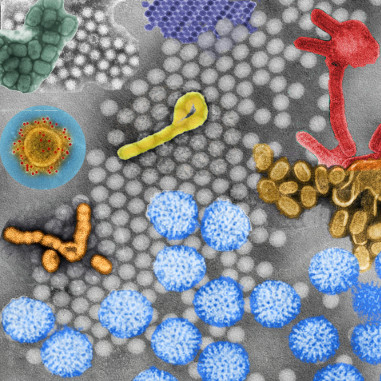Product Description
Ref-SKU:
008V-03893 Infectious cell culture supernatant containing Human 2019-nCoV strain 2019-nCoV/Italy-INMI1-isl, clade O. This strain is preserved under Viral Storage Medium -80C. To confirm its identity the virus has been completely sequenced. Import permit can be needed in your country. If yes, please indicate it in your online enquiry.
Product Risk Group:
ICTV Taxonomy:
Virus name:
Strain:
Storage conditions:
Viral Storage Medium -80C
Sequencing:
Complete genome
Infectivity:
Infectivity tested and quantified
Mycoplasmic content:
Mycoplasma free
GMO:
No
Virus host type:
Infectivity Test:
Limiting dilution assay, by determining tissue culture infectious dose (TCID50) with the method of Reed & Muench
Production cell line:
Genbank reference:
Virus Cultivability:
Passage:
2P
Identification technique:
PCR and sequencing
Technical recommendation:
Culture conditions: 37°C and 5% CO2. Culture Medium: Minimum Essential Medium Eagle supplemented with 2% heat-inactivated FBS and 1% L-Glutamine.
Shipping conditions:
IATA Classification:
Note:
For virus stock preparation, Vero E6 cells were infected. Cell lysates, obtained through freezing/defreezing cycles, were clarified and aliquoted.
Information about the collection of the virus
Recombinant product:
No
Biological material origin:
Natural origin
Collection date:
Wednesday, 29 January, 2020
Country of collection:
Suspected epidemiological origin :
Isolation host:
Isolation technique:
cell culture

Comments (2)
Could I get the inactivated virus?
I want to know whether I can receive it as it is inactivated.
Dear Dr Lee,
wich type of the inactivation do you need?
We can provide non infectious cell culture supernatant containing Human 2019-nCoV strain 2019-nCoV/Italy-INMI1 RNA in the AVL lysis buffer for the implementation of molecular tests.
Otherwise we can provide non infectious cell culture supernatant containing Human 2019-nCoV strain 2019-nCoV/Italy-INMI1 treated with Triton X-100 for the implementation of serological tests. The chemical inactivation can disrupt the lipid membrane of the virus without affecting proteins.